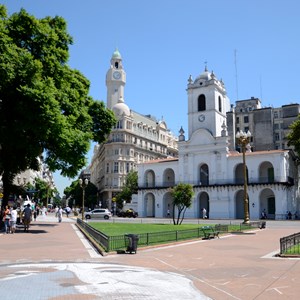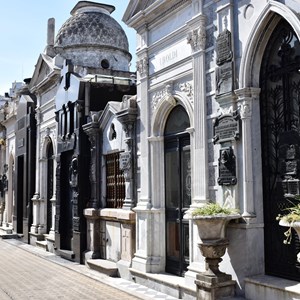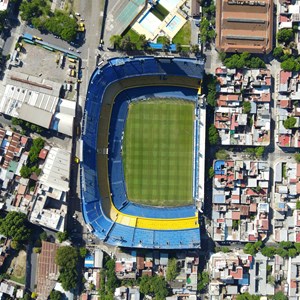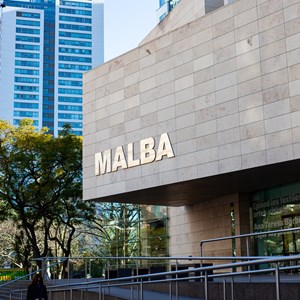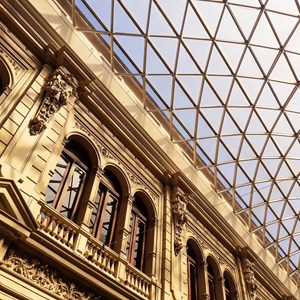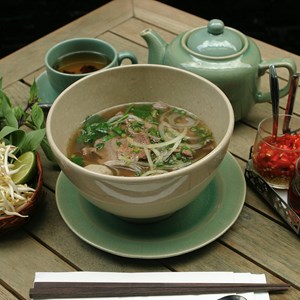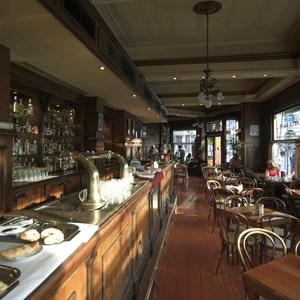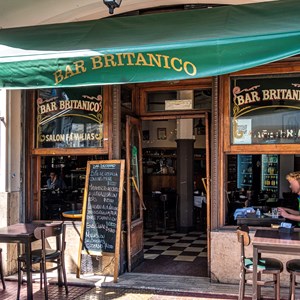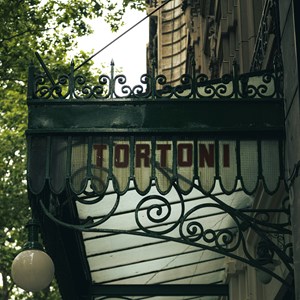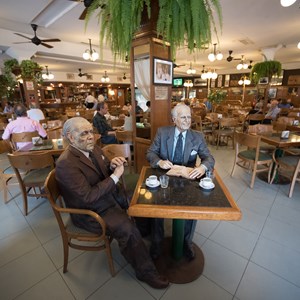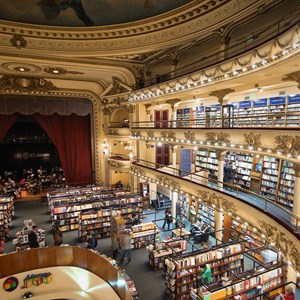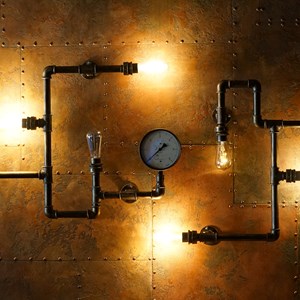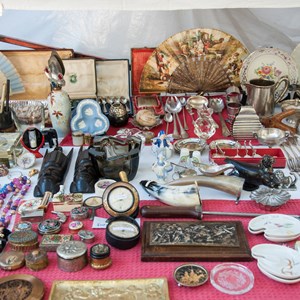

The Argentinian capital, Buenos Aires, is a city like no other. It has a hint of a European feel but with a distinctly Latin American flavour. It is cosmopolitan yet autochthonous. Every street corner and narrow alleyway is teeming with art and culture, history and personality, tango, rock 'n' roll, and football. It is a city of museums, galleries, classical-style cafes, world-class steakhouses, antique markets, bookstores, and midnight strolls along the majestic River Plate.
 javarman/Shutterstock.com
javarman/Shutterstock.com
The City
Buenos Aires is an extensive city, and every area has something different to offer. Recoleta and Palermo are widely considered the trendiest neighbourhoods, the former being a more cultured area with fashionable boutiques and galleries as well as high-end hotels lining its broad tree-lined avenues. The latter being a greener, more peaceful area, whose parks and lakes attract weekend crowds for fun and relaxation. Puerto Madero, once a harbour area, has been thoroughly refurbished, turning old brick warehouses into hip bars and nightclubs.
Those seeking a more bohemian vibe will prefer to visit San Telmo and La Boca. As one of the oldest neighbourhoods in the city, San Telmo is considered a national monument. Characterised by narrow cobblestone streets and colonial-style buildings, it is loved by both locals and tourists who flock here on weekends to browse its antique boutiques and markets. La Boca, once a middle-class neighbourhood, is also known as one of the historic areas of the city. During weekends, many people visit the district in the hope of coming across a sensual tango show or simply to admire the colourful steel shacks that were once the dwellings of migrant workers.
Las Cañitas is Buenos Aires' gastronomic hub, old aristocratic Retiro boasts some of the city's most beautiful architecture, residential Belgrano mixes mansions with skyscrapers, and of course, the downtown area is home to most of the city's monuments and important national buildings. Those who take the time to really explore the city will marvel at the sheer amount and diversity of things to see and do, and will surely feel that one visit is not nearly enough to take it all in.
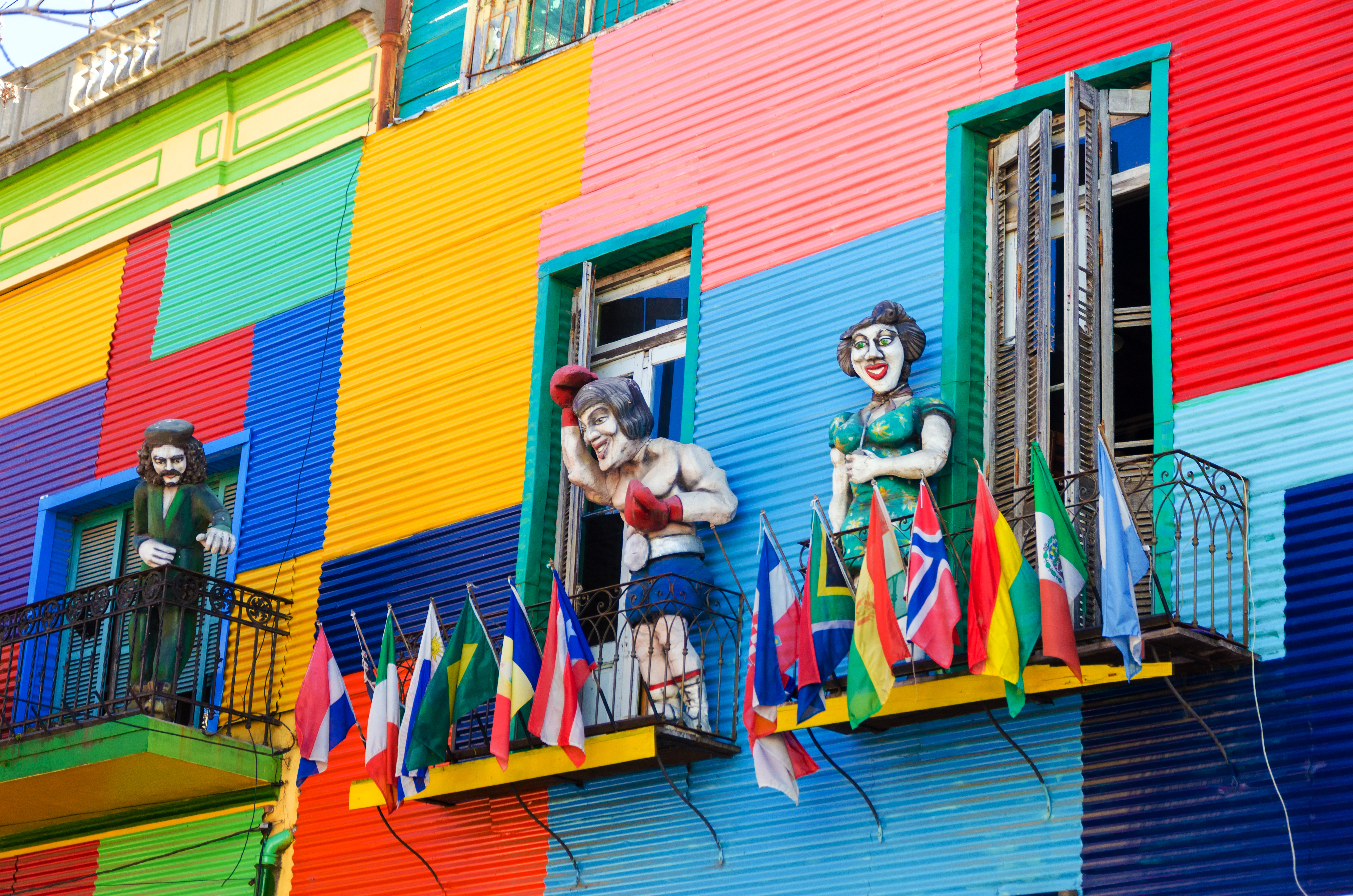 Jess Kraft/Shutterstock.com
Jess Kraft/Shutterstock.com
Do & See
It's difficult to fit everything there is to do in Buenos Aires into any itinerary, no matter how hard you try. Art-lovers will have plenty to enjoy at the world-class museums and theatres, shopaholics will splurge at the numerous markets selling everything from antiques to leather, fans of architecture can admire the art nouveau, art deco and neoclassical style buildings that dominate the different neighbourhoods, foodies will delight at the top-notch steakhouses and fusion restaurants, and the list goes on. It is above all, however, a city that begs to be walked, and wise travellers will take their time exploring broad avenues and narrow alleyways alike, taking in all they have to offer.
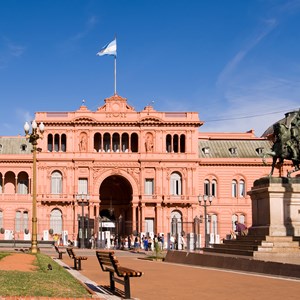 Eduardo Rivero/Shutterstock.com
Eduardo Rivero/Shutterstock.com
Casa Rosada
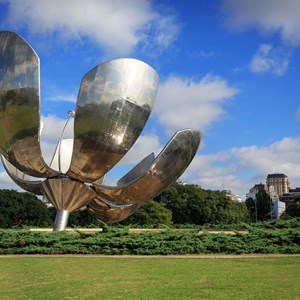 sunsinger/shutterstock
sunsinger/shutterstock
Floralis Genérica
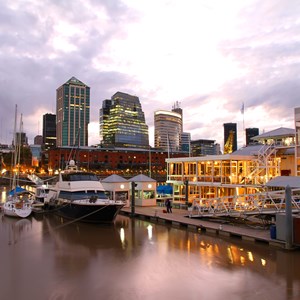 Spectral-Design/Shutterstock.com
Spectral-Design/Shutterstock.com
Puerto Madero
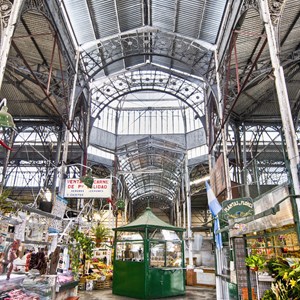 Anibal Trejo/Shutterstock.com
Anibal Trejo/Shutterstock.com
San Telmo
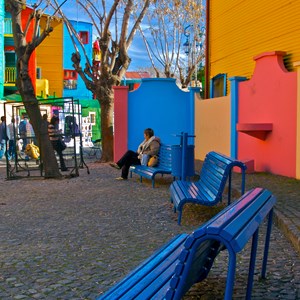 Daniel Korzeniewski/Shutterstock.com
Daniel Korzeniewski/Shutterstock.com
La Boca
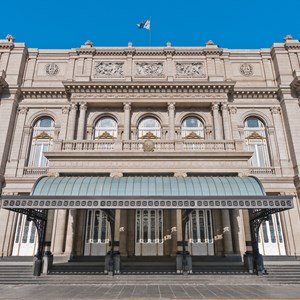 Anibal Trejo/Shutterstock.com
Anibal Trejo/Shutterstock.com
Teatro Colón
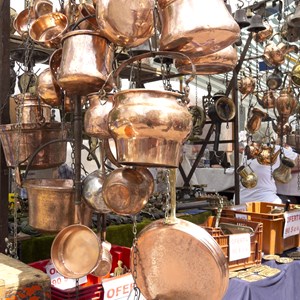 Toniflap/Shutterstock.com
Toniflap/Shutterstock.com
Feria de San Pedro Telmo
 theblackfatcat/Shutterstock.com
theblackfatcat/Shutterstock.com
Dining
The first thing that pops into people's minds when thinking of a typical Argentinian dish is certainly steak. The whole country is famous for its juicy and flavorful steaks from grass-fed Pampas cattle. "Parrilla", meaning both steakhouses and the grill itself is key to the country's cuisine and culture, but be sure to explore other culinary trends during your visit.
The popular "bodegones", or neighbourhood eateries, serve meat, pasta, fish, pizza, and many other kinds of food. A large number of new restaurants are opening regularly, bringing a larger variety of international specialities (i.e Asian, French, Italian and South American) to the dining scene in Buenos Aires. However, let's not forget about the most important and symbolic national street food, the "choripán", the ubiquitous grilled chorizo sandwich.
 Valeria Aksakova/shutterstock.com
Valeria Aksakova/shutterstock.com
Il Matterello
 nimon/shutterstock.com
nimon/shutterstock.com
El Cuartito
 HikoPhotography/shutterstock.com
HikoPhotography/shutterstock.com
Síntesis Tapas Asiáticas
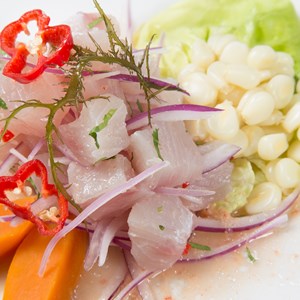 Christian Vinces/shutterstock.com
Christian Vinces/shutterstock.com
La Mar
 Fanfo/shutterstock.com
Fanfo/shutterstock.com
El Gran Paraiso
 joesayhello/Shutterstock.com
joesayhello/Shutterstock.com
Una Canción Coreana
 Kzenon/Shutterstock.com
Kzenon/Shutterstock.com
Aramburu Restó
 Ksenia Ragozina/Shutterstock.com
Ksenia Ragozina/Shutterstock.com
Cafes
Porteños take their coffee seriously. They usually like it black, strong, and with lots of sugar. They also like to take their time with it, lingering for hours at one of the city's many historic cafes.
The romantic images of bohemians, artists, and writers working away on their next masterpiece in the secluded corner of a crowded cafe come to life in Buenos Aires. Take your time to discover these fascinating places, experience the vibe of a porteño cafe and while you are at it, take advantage of the well-known Argentinian pastries.
 ImYanis/shutterstock.com
ImYanis/shutterstock.com
Full City Coffee House
 mavo/shutterstock.com
mavo/shutterstock.com
LAB Training Center & Coffee Shop
 By wideonet/shutterstock
By wideonet/shutterstock
London City
 Theerawan/shutterstock
Theerawan/shutterstock
Cocu Boulangerie
 worest/shutterstock.com
worest/shutterstock.com
Cafe Rivas
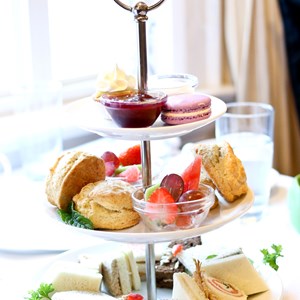 TobinCStudio/shutterstock
TobinCStudio/shutterstock
Confitería Las Violetas
Bars & Nightlife
Like most great cities, Buenos Aires is best experienced at night. Not only is it a city that never sleeps, but it is also a place where the fun is just getting started after midnight.
When the sun goes down music starts spreading everywhere, theatres have late-night showings, restaurants and bars start to get crowded for dinner and it is only from 1 am that the local 'boliches' (nightclubs) start opening their doors.
The city's unique nightlife, which usually lasts until past 7 in the morning, is sure to have visitors sleep deprived, but always wanting more.
 Vitaliy Kyrychuk/shutterstock.com
Vitaliy Kyrychuk/shutterstock.com
El Boticario
 food.kiro/shutterstock.com
food.kiro/shutterstock.com
Floreria Atlantico
 Yulia Grigoryeva/shutterstoc.com
Yulia Grigoryeva/shutterstoc.com
Vico Wine Bar
 Yulia Grigoryeva/shutterstock.com
Yulia Grigoryeva/shutterstock.com
Hache Almacén
 Arina P Habich/shutterstock.com
Arina P Habich/shutterstock.com
Éter Club
 bogdanhoda/Shutterstock.com
bogdanhoda/Shutterstock.com
La Fuerza
 DANIEL/Puscau Daniel/shutterstock
DANIEL/Puscau Daniel/shutterstock
Theatres on Avenida Corrientes
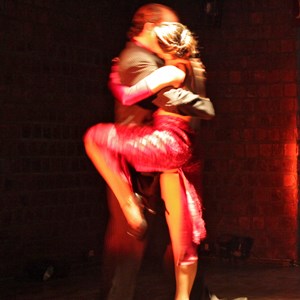 DMSU/shutterstock.com
DMSU/shutterstock.com
Tango at Cafe Tortoni
 Africa Studio/Shutterstock.com
Africa Studio/Shutterstock.com
Wine Tasting at Palacio Duhau
 Rawpixel.com/shutterstock
Rawpixel.com/shutterstock
Culture at Centro Cultural Borges
Shopping
Buenos Aires is known to be one of the shopping capitals of South America, and it certainly lives up to its reputation. From the trendy boutiques and luxury shopping of Recoleta and Palermo to the antiques and handicrafts of San Telmo to the exquisite high-quality leather products of Villa Crespo to the ubiquitous bookstores spread out all over the city, every corner of the city seems to have its own specialty when it comes to shopping, and it can keep even the most avid shopper busy for days.
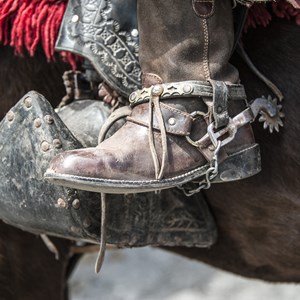 Ksenia Ragozina/shutterstock.com
Ksenia Ragozina/shutterstock.com
Feria de Mataderos
 Olga V Kulakova/shutterstock
Olga V Kulakova/shutterstock
Feria Plaza Serrano
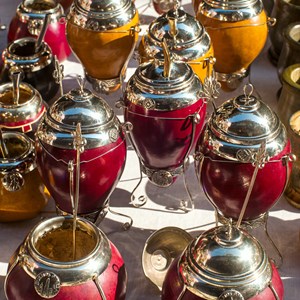 Ksenia Ragozina/shutterstock
Ksenia Ragozina/shutterstock
Feria de San Pedro Telmo
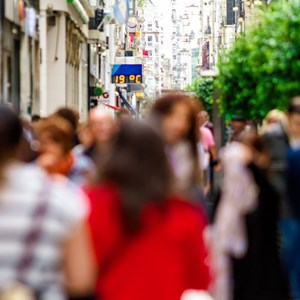 Simon Mayer/Shutterstock.com
Simon Mayer/Shutterstock.com
Calle Florida
 Pressmaster/shutterstock.com
Pressmaster/shutterstock.com
Recoleta Mall
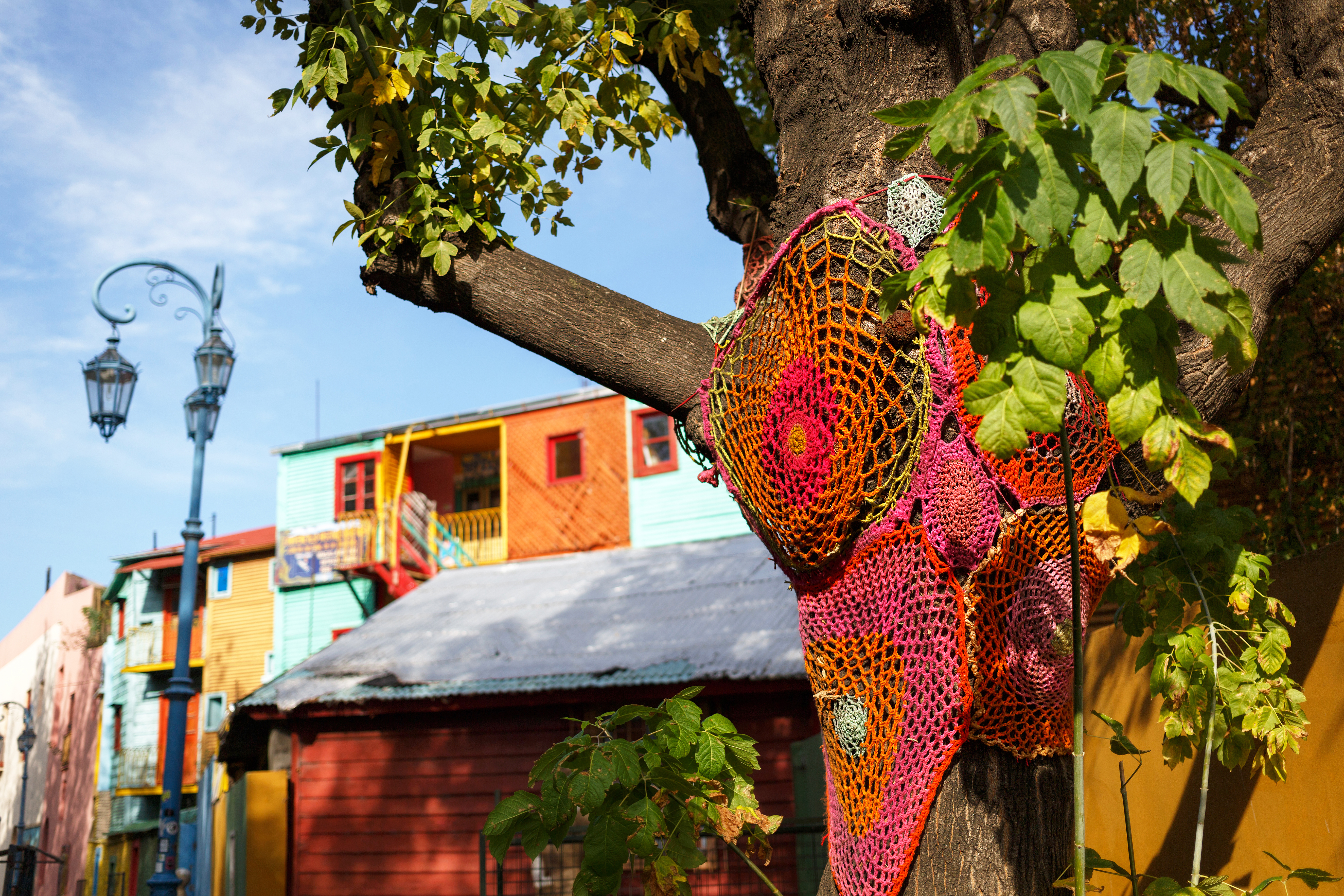 sunsinger/Shutterstock.com
sunsinger/Shutterstock.com
Tourist Information
Ministro Pistarini International Airport, Ezeiza (EZE)
Ministro Pistarini International Airport (EZE), more commonly referred to as simply Ezeiza International Airport, is located about 22 kilometres outside of Buenos Aires. It is the largest airport in Argentina, handling about 85% of the country's international air traffic, and is the hub for Aerolíneas Argentinas and LAN Argentina.
The easiest way to get to the city from the airport is by taking one of the authorised taxis from the stalls just outside the terminals. The ride should take about 30 minutes.
There are also minibus and shuttle services that are cheaper, but only have services to each company's terminal, so travellers must switch to local transportation for the rest of the journey.
Some public buses run to central areas of the city. Bus 51 goes to Constitución and number 86 goes to Plaza de Mayo.
Address: Autopista Tte Gral. Ricchieri Km 33,5, Ezeiza
Email:
Phone: +54 11 5480 6111
Website: www.aa2000.com.ar
More Information:
Passport & Visa
Argentina can be visited visa-free for up to 90 days by citizens of most European countries, Australia, New Zealand, Japan, South Korea, Israel, UAE and most countries in America.
Visitors coming from Jamaica, Kazakhstan and Malaysia can enter the country without a VISA for a stay of up to 30 days. Whereas those coming from Kosovo, Nauru, Taiwan, Tonga and Tuvalu must use a Travel Certificate issued by Argentina instead of a VISA.
If you are unsure whether or not you need to apply for a visa, we recommend contacting the embassy or consulate in your country.
Address:
Email:
Phone:
Website: www.migraciones.gov.ar/accesible/indexdnm.php?visas
More Information:
Best Time to Visit
The best time to visit Buenos Aires is in the fall, from April to June or in the spring, from September to December. At these times of the year the city is usually less crowded, the weather milder and hotel prices lower.
It is not recommended to visit Buenos Aires during the peak season (South American summer) from January to February, given that it is characterised by high temperatures and a higher inflow of tourists.
On the other end, winter isn't usually magnanimous with visitors, who normally experience cold and rainy days lasting from June to August.
Some interesting events throughout the year are:
February: Carnaval Porteño
March: Opening of Opera and Ballet season
April: International Horse Riding Exhibition; Buenos Aires Book Fair
May: May Revolution Day (25th); International Decorative Art Fair
July 9: Independence Day
August: Fashion Week; Tango Festival and World Championship
November: Gay Pride; International Buenos Aires Jazz Festival; Creamfields
Address:
Email:
Phone:
Website:
More Information:
Buenos Aires Cruise Port
The Cruise Terminal in Buenos Aires, called Terminal de Cruceros Benito Quinquela Martín. The Buenos Aires port is located about 2 km from the downtown. It might look close on the map, but the area is quite deserted — you will be better off taking a shuttle buses or a taxi. Taxis are always available at the terminal.
The Buenos Aires port has a yacht berth called Puerto Madero, which is a modern re-developed area popular with locals.
Address:
Email:
Phone:
Website: www.argentina.gob.ar/transporte/administracion-general-puertos-se/buques/cruceros/terminal-de-cruceros
More Information:
Public Transport
Public Transport in Buenos Aires is efficient and affordable and by far the best way to get around. There are two types of buses (regular 'colectivos' and Metrobus), as well as Latin America's oldest subway system, or 'Subte'. All public transport in the city is paid using the rechargeable SUBE card, which can be purchased at post offices and corner shops.
Bus stops are ubiquitous. Be sure to stand in line at the bus stop, as they are strictly respected. Tell the driver where you're going and he'll let you know how much the fare is, as it varies depending on how far you are traveling. Colectivos run 24 hours, though less frequently at night. Metrobuses have dedicated lanes along major roads to speed across the city, and many stations have free WiFi.
The Subte is clean, reliable and both the fastest and cheapest way to get around. Trains run often, every 3-10 minutes, Mon-Fri 5am–10:30pm, Sun 8am–10pm. Several lines run parallel East to West, while line C crosses them going North to South.
Address:
Email:
Phone:
Website:
More Information:
Taxis
Buenos Aires' black and yellow taxis are ubiquitous and can be flagged down anywhere. Rides are metered, and fares go up 20% at night. You can order a taxi through the official BA Taxi mobile application.
Onda Verde: +54 11 4867 0000
Premium: +54 11 4374 6666, +54 11 5238 0000
Didi and Uber rideshare apps are available in Buenos Aires.
Address:
Email:
Phone:
Website: www.buenosaires.gob.ar/infraestructura/movilidad/taxis/ba-taxi
More Information:
Post
Correo Argentino is the government postal service. Correo International (Retiro bus station) should be used for the delivery of international packages weighing over 2kg. The government run postal service is not known for its speed or reliability. Consider using private companies for sending valuable paperwork.
Private services in town are: DHL, Fedex, OCA, Andreani.
Address: Correo Argentino: Sucursal Plaza Rodriguez Peña, Uruguay 1069, Buenos Aires
Email:
Phone: +54 11 4816 7543
Website:
More Information:
Pharmacy
Argentina has an outstanding pharmaceutical industry. If you have a regular prescription, be sure to have your doctor write down the name of the drug, not just the brand name.
You can easily spot pharmacies by their green-and-white crosses. The largest and most common pharmacy chain is called Farmacity. Their stores will often be open around the clock.
Address: Avenida Raúl Scalabrini Ortíz 1868, Buenos Aires
Email:
Phone: +54 11 4511 5131
Website: www.farmacity.com
More Information:
Telephone
Country code: +54
Area code: 11
Address:
Email:
Phone:
Website:
More Information:
Electricity
In Argentina the power plugs and sockets are of type C (also known as the standard "Euro" plug) and I. Type I is mainly used in Australia, New Zealand, China and the South Pacific, and comes with two flat prongs at an angle and an optional ground pin.
The standard voltage is 220–240 V and the frequency is 50 Hz.
Address:
Email:
Phone:
Website:
More Information:


